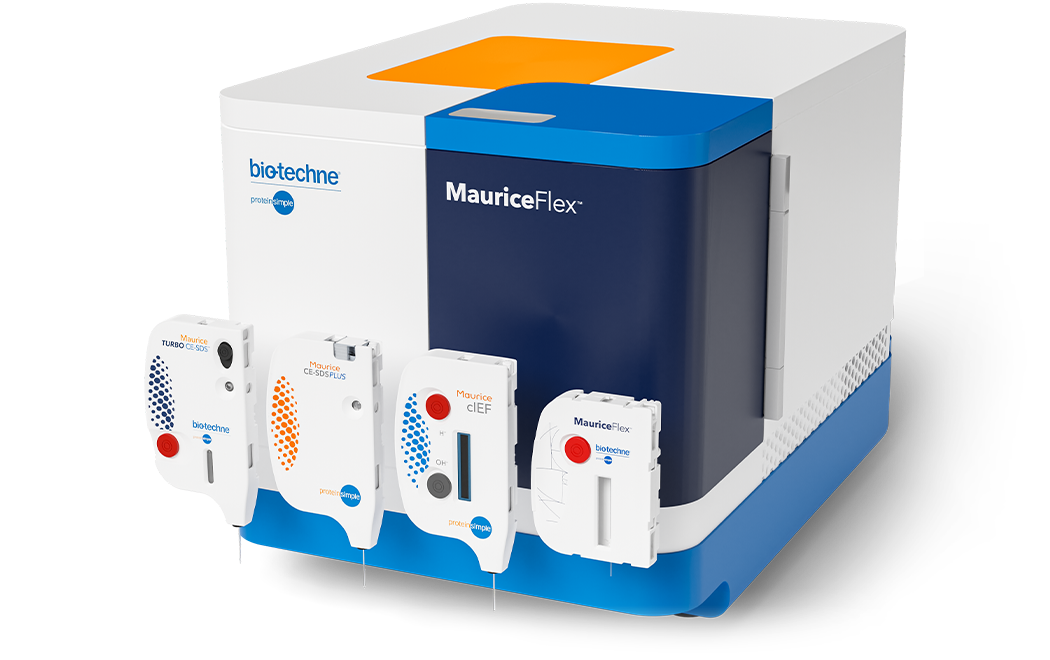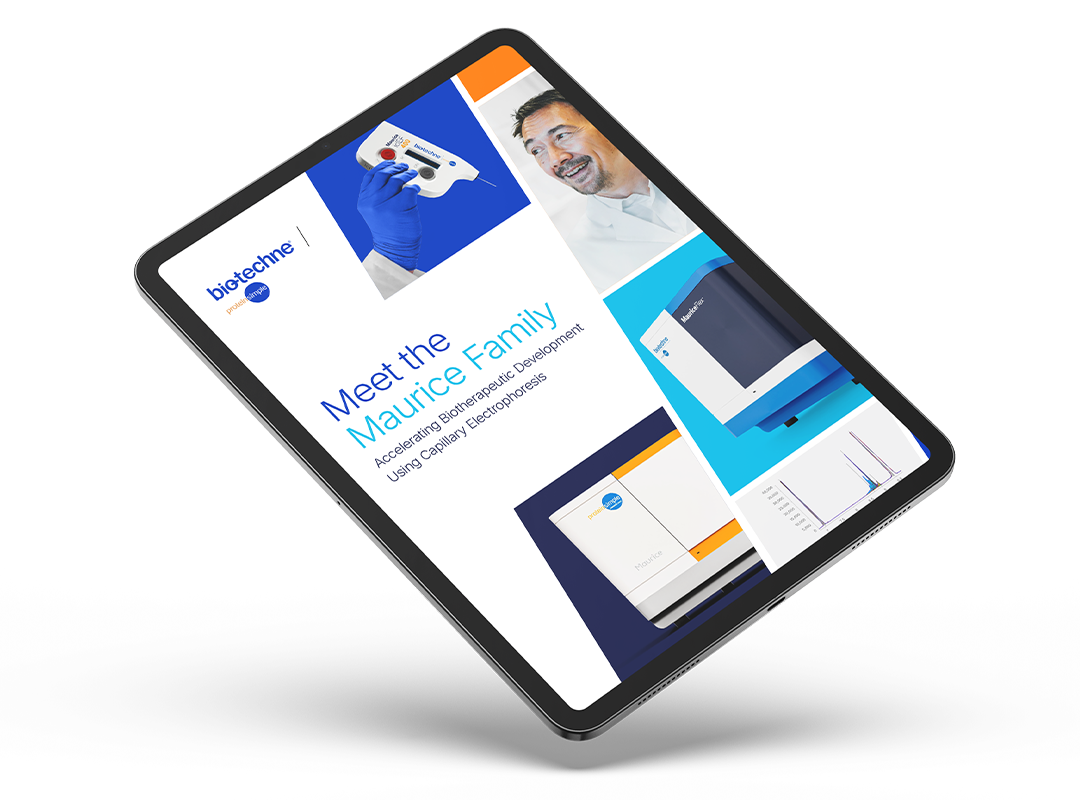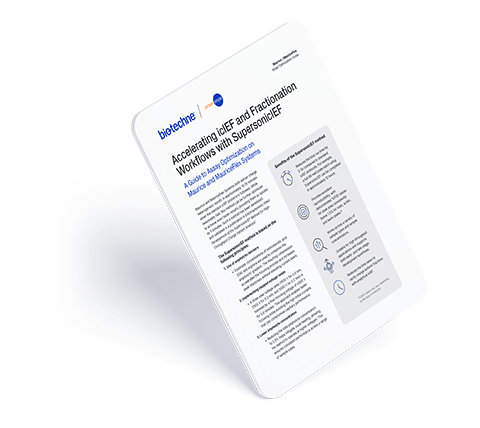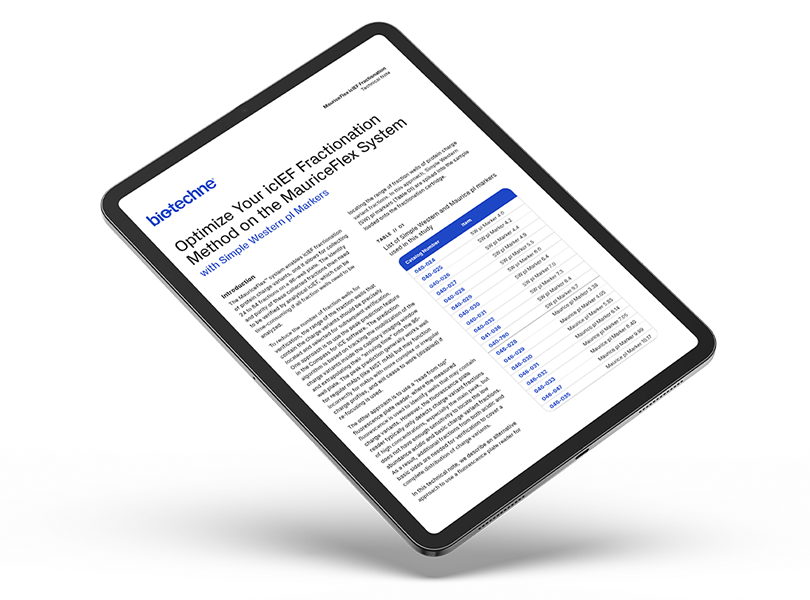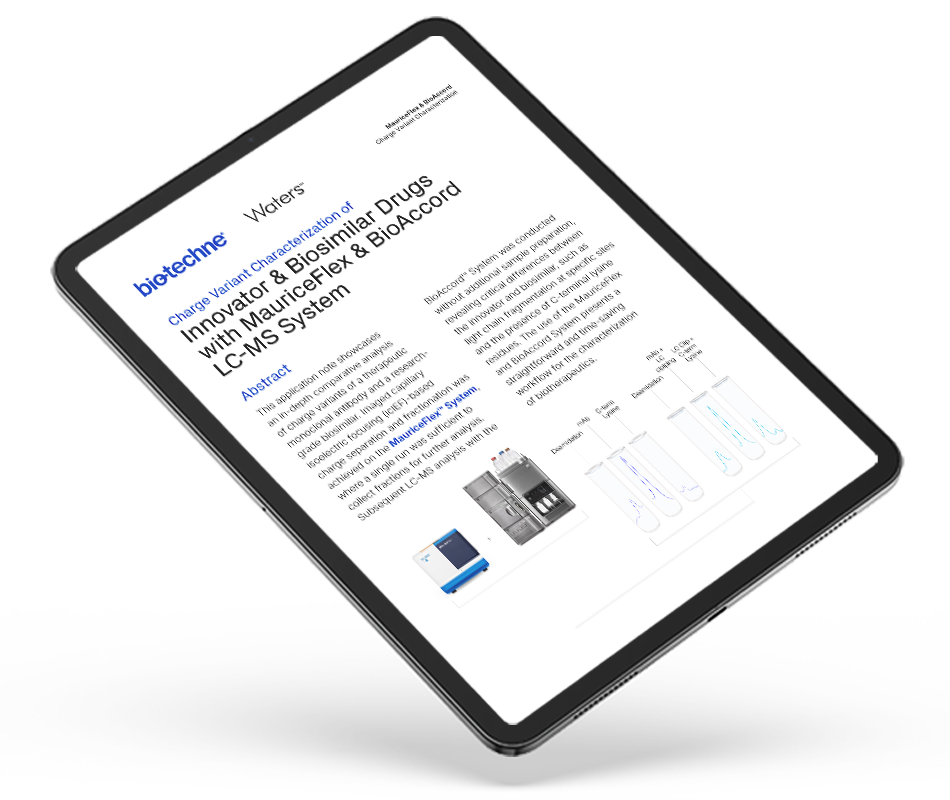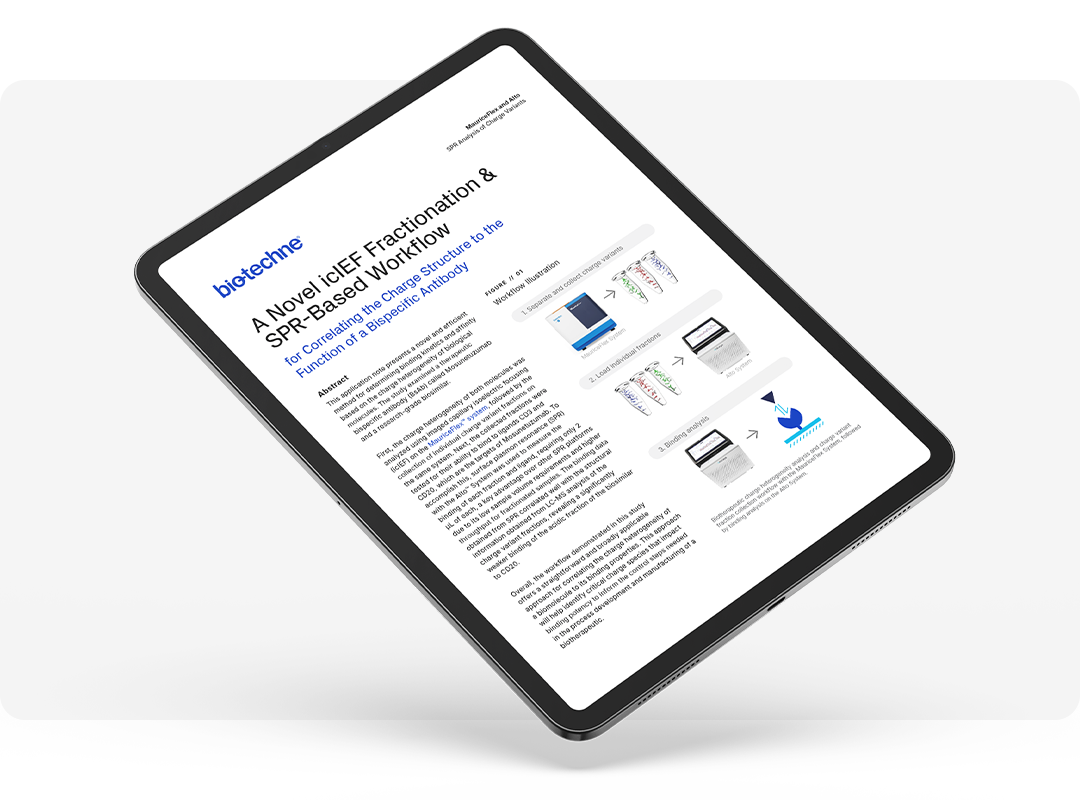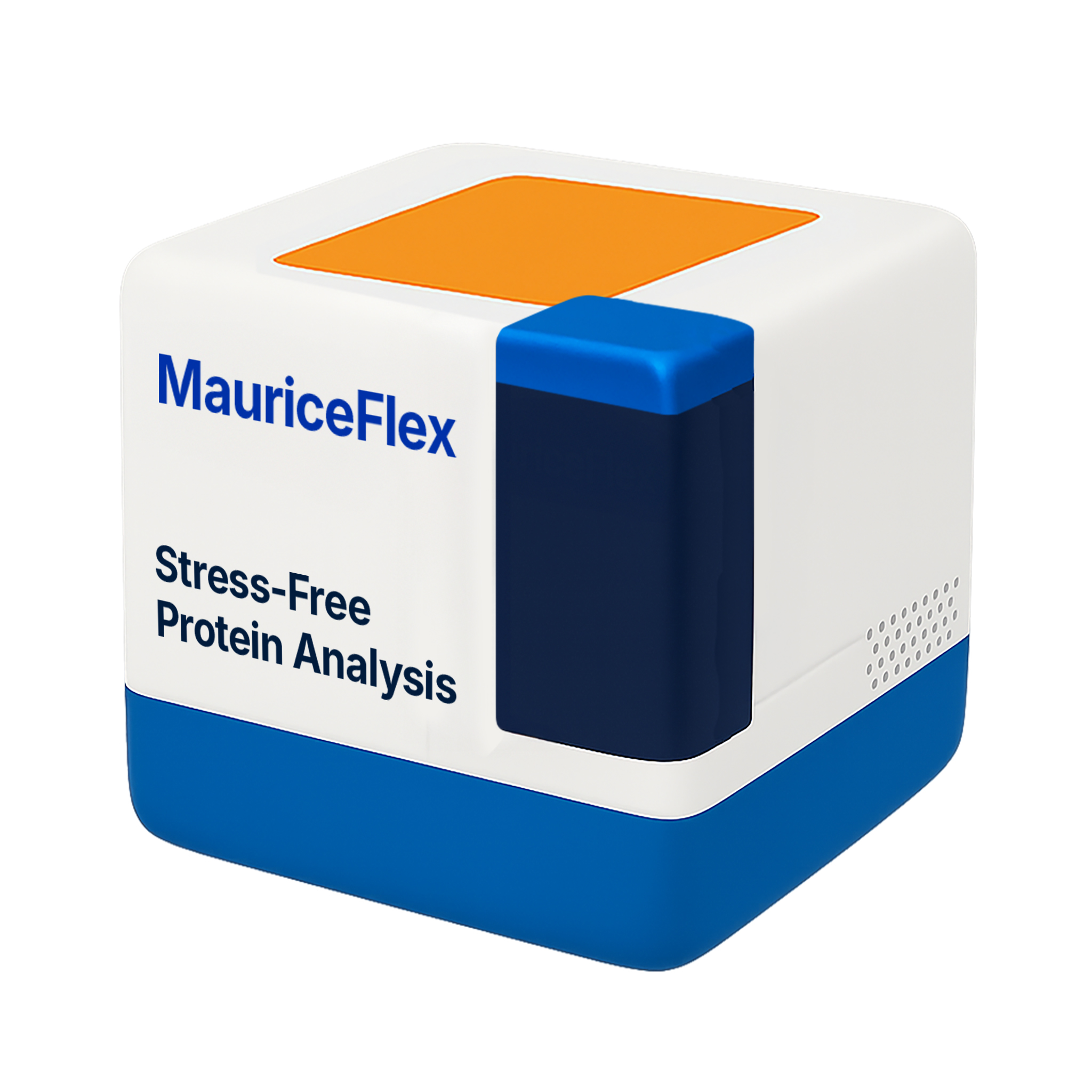
Volume 2, Issue 1, Fall 2025
Table of Contents
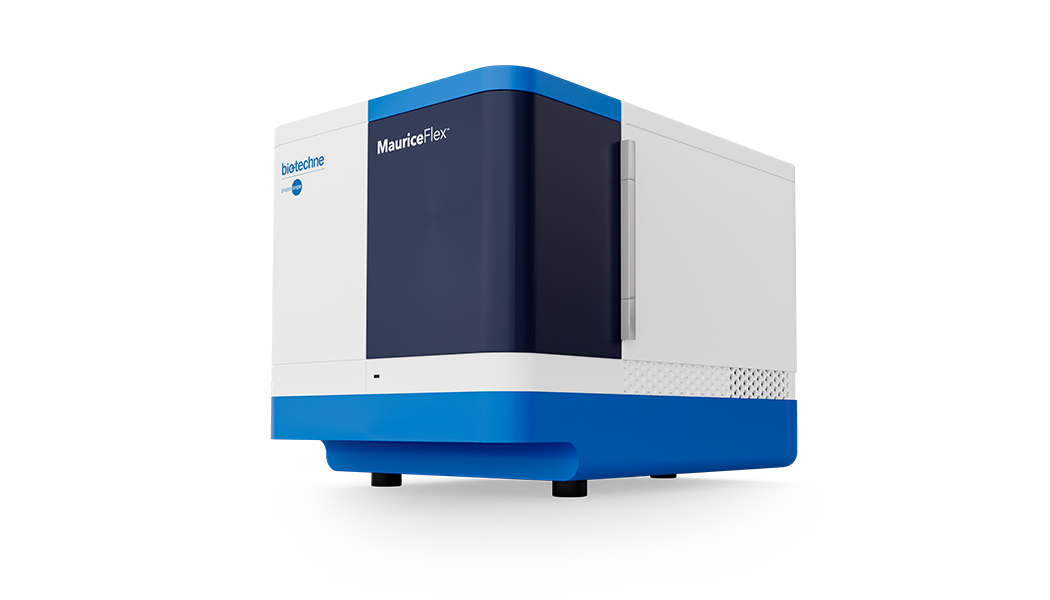
This article discusses the advantages of the MauriceFlex™ System, which is designed for comprehensive, high-quality analysis of biotherapeutics through charge (icIEF), charge fractionation, and size (CE-SDS) interrogation method. The iciEF-fractionation enables further characterization of charge variants using LC-MS and SPR, providing insights into structural and functional differences.
- Eli Lilly is acquiring Adverum Biotechnologies and its lead program, Ixo-vec, an intravitreal gene therapy candidate for age-related macular degeneration. Get details here
- Biogen licenses Vanqua Bio's experimental immune disorder drug, which targets a protein involved in various inflammatory disorders. Read more
- Takeda Pharmaceutical Co (Japan) signs deal with Innovent Biologics (China) to help develop candidates for non-small cell lung, colorectal, gastric and pancreatic cancers. Scan here
- Tax incentives awarded to 25 companies will create over 800 new jobs in Massachusetts this year. See recipients here
- Nobel prize in Medicine awarded to scientists in US and Japan for important insights into peripheral immune tolerance. Meet the winners
Brochure: Meet the Maurice Family
Brochure: Meet the Maurice Family
This brochure highlights the latest data and applications for your one-stop solution for automated icIEF and CE-SDS across all process stages. The MauriceFlex instrument features an icIEF-fractionation capability for further characterization of charge variants using LC-MS or SPR analysis. Discover how to improve resolution, save time and reduce hazardous waste compared to IEX and SDS-PAGE methods.
Guide: Accelerating icIEF and Fractionation Workflows
Guide: Accelerating icIEF and Fractionation Workflows
This Guide to Assay Optimization for Maurice and MauriceFlex Systems describes the SupersonicIEF method that reduces the time to obtain charge heterogeneity results from 15 to 5 minutes. In addition, the FlexsonicIEF method enables faster mobilization and reduces total fractionation time by approximately 40 minutes.
Tech Note: Optimize Your icIEF Fractionation Method
Tech Note: Optimize Your icIEF Fractionation Method
Learn how the Simple Western pI markers can illuminate bright fluorescence signals on a plate reader. Spiking in these reagents, with pI values that sandwich the charge variants of interest, can help to reduce guesswork in fraction identification and save time in fraction reanalysis.
App Note: Comparing Charge Variants with MauriceFlex and MS
App Note: Comparing Charge Variants with MauriceFlex and MS
Discover an efficient workflow for the characterization of charge variants fractionated on the MauriceFlex instrument, digested using the Genovis FabRICATOR® enzyme, and analyzed on the Waters BioAccord™ LC-MS using subunit mass analysis.
App Note: Charge Variant Characterization with MauriceFlex & LC-MS
App Note: Charge Variant Characterization with MauriceFlex & LC-MS
Explore a simple icIEF and LC-MS workflow that provides in-depth characterization of charge variants. Learn how leveraging these two benchtop platforms can uncover critical differences between a therapeutic mAb and its biosimilar.
App Note: A Novel iCIEF and SPR-Based Workflow
App Note: A Novel iCIEF and SPR-Based Workflow
Read about a novel method that utilizes icIEF-based charge separation and fractionation followed by binding affinity analysis using surface plasmon resonance (SPR), offering a robust and efficient approach to compare differences in binding affinity between an innovator drug and its research grade biosimilar.
Key publications and posters featuring icIEF fractionation workflows
- Insights into Adeno-Associated Virus Capsid Charge Heterogeneity
- Enabling icIEF Peak Identification of AAV Capsid Proteins by Fractionation on MauriceFlex and Subsequent Analysis by LC–MS
- Charge Variant Mass Spectrometry for Analysis of Biotherapeutics with Orthogonal and Fractionated Sampling
- Charge Variant Microheterogeneity Explored via icIEF & Offline MS Analysis of Infliximab Biosimilars
- Therapeutic Protein Charge Variant Characterization with Intact Mass & Peptide Mapping Following Microgram Preparative Capillary Isoelectric Focusing Electrophoresis Fractionation
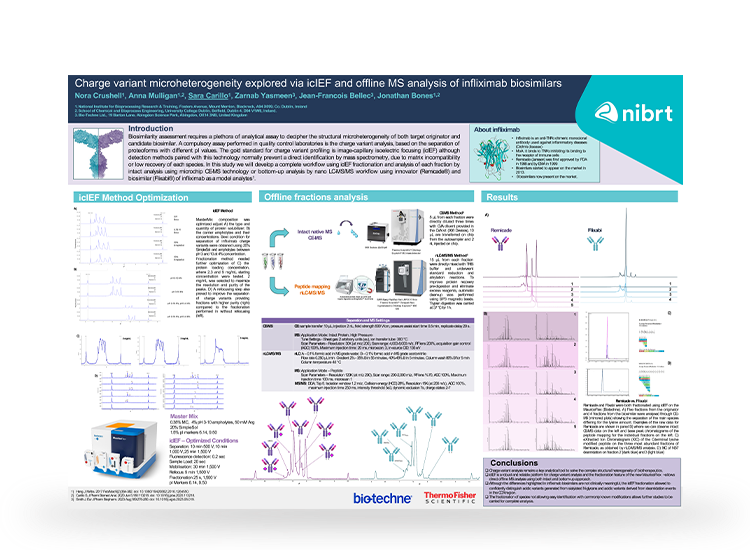
Be inspired by the latest webinars on demand
Nicki Zhang (MilliporeSigma) and Nelly Luong (Technical University of Braunschweig) discuss integrated workflows to characterize mAbs and ADCs with varying levels of heterogeneity. Nicki demonstrates how icIEF fractionation combined with MS enhances the resolution and interpretability of charge variant profiles to support formulation development, process optimization, and comparability studies. Nelly describes a preparative fractionation method that improves the sensitivity for subsequent peptide mapping using LC-MS.
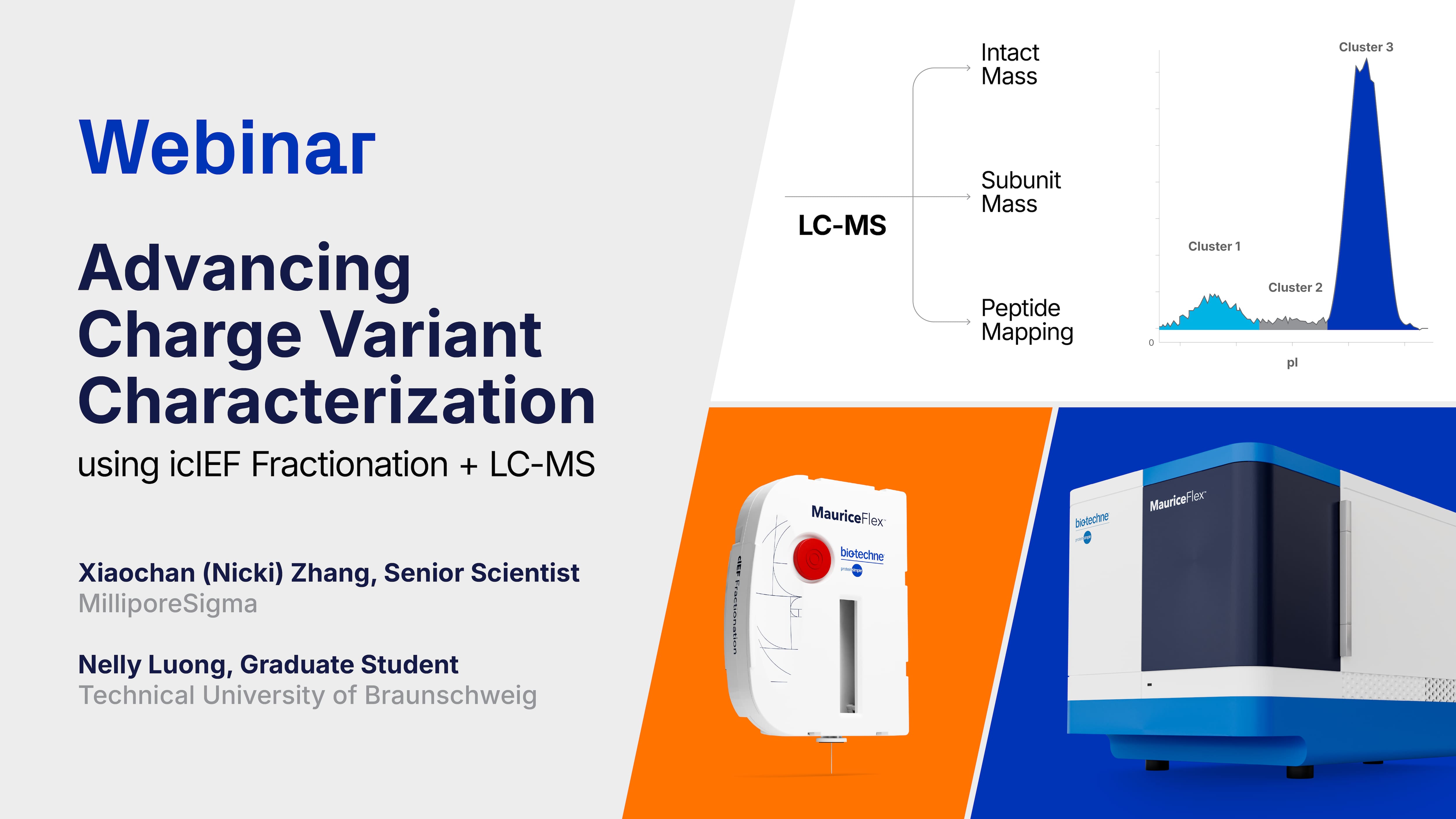
Utilizing novel icIEF fractionation and mass spec for the charge characterization of biotherapeutics
Dr. Lan Li (Amgen) and Amreen Jonas (Mersana Therapeutics) demonstrate the use of MauriceFlex instrument to fractionate a monoclonal antibody (mAb) using icIEF followed by intact mass spec analysis, enabling the accurate identification of distinct isoforms, and providing insights into the mAb’s charge heterogeneity.
Enabling deeper characterization of biomolecular charge variants using a simple icIEF and subsequent LC-MS workflow
Dr. Srini Rao (Bio-Techne) and Samantha Ippoliti (Waters Corp) illustrate a simple workflow that provides in-depth characterization of the charge variants of a therapeutic monoclonal antibody (mAb) and a research grade biosimilar using the MauriceFlex System and Waters BioAccord LC-MS. They demonstrate that icIEF-based charge separation and fractionation followed by intact mass analysis can uncover critical differences between a therapeutic mAb and its biosimilar.
Join us at one of our upcoming User Meetings or Conferences to learn about the latest advancements in biotherapeutic characterization. Or let us provide lunch or snacks at your site while sharing our Biologics Bitesize Tech Talks on the topics of most interest to your lab.
- WCBP Symposium Washington, DC (January 27-29, 2026)
- Bio-Techne and Quality Assistance Joint User Meeting, Belgium (February 3, 2026)
Introducing: Biologics Bitesize Tech Talks
Do you want to learn about the latest applications for the Maurice and MauriceFlex platforms - but don't have much time? We’re happy to host lunch or a break at your convenience to discuss the topics of most interest to your lab. Choose from our menu of 15-minute bitesize talks to discover what’s new in the areas of biomolecular-specific analysis, icIEF fractionation, CE-SDS, Gene Therapy, and more!
Choose from a full menu of topics

Software Updates
Upgrade to Compass for iCE v4.1:
Now validated for Windows 11
- All cartridges are validated for use up to the max injection/batch
- Notification of 100 Injection guarantee limit has been removed
- Run can be initiated using cartridges that have expired (except for MauriceFlex cart)
- Regular post-run cleanup and purging now guided by the software
- Critical for maintaining cartridge stability and maximizing cartridge life
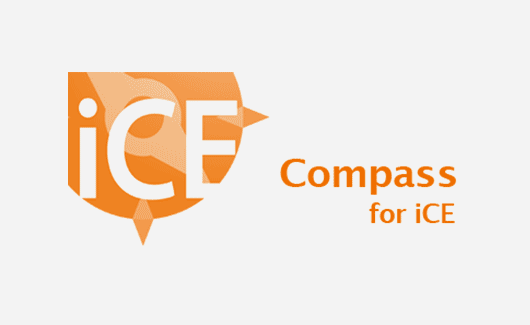
Optimizing icIEF Fractionation using the MauriceFlex system
In her training series “Technical Tips from Monica Tyagi,” Dr. Tyagi discusses some simple but important steps for method development for icIEF fractionation, including optimizing the icIEF profile & focusing, sample concentration, and fractionation parameters. She shares key resources as well as biologics class-specific examples for mAbs, ADS, AAVs and bispecifics.
"For charge variant analysis, we have largely replaced ion exchange chromatography with the icIEF on the Maurice system…. Once we brought it in-house, it was the ideal platform for us - the icIEF fractionation capability [using the MauriceFlex instrument] enabled us to get further insights into the charge variants."
- Arnaud Delobel, PhD, Director, R&D and Innovation at Quality Assistance
